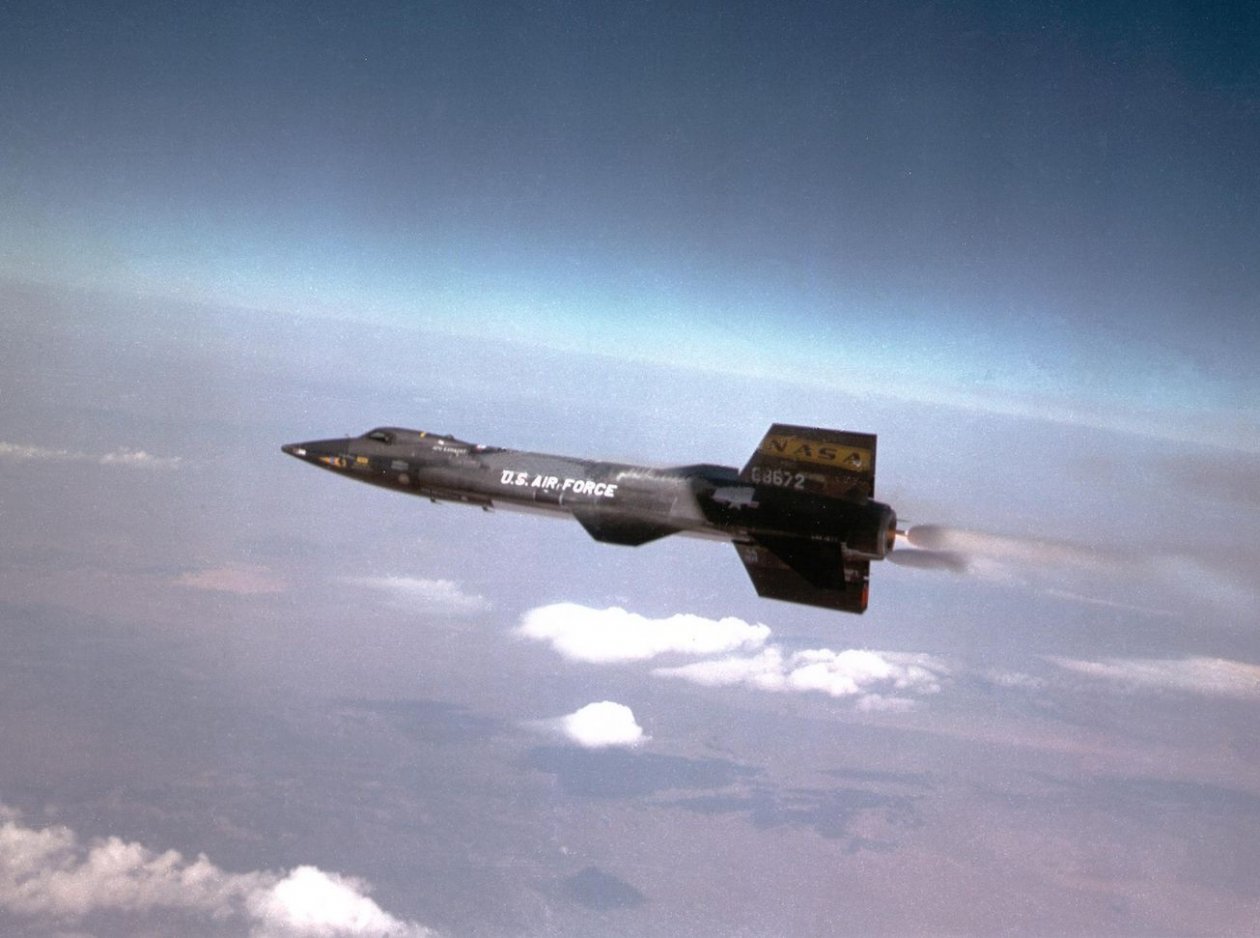By Caleb Larson
The date was October 3rd, 1967. U.S. Air Force test pilot William Knight was flying North American Aviation’s X-15, a rocket-powered airframe. Knight was flying near Edwards Air Force Base in California—at a lofty 264,000 feet, or about 50 miles. Not only was he flying high, Knight was also flying fast. His flight was one for the record books—at Mach 6.7, William Knight was the fastest-flying pilot ever. His journey to this distinction wasn’t a cakewalk, though.
A mere four months before his record-breaking flight, Knight piloted an X-15 over the Nevada desert. The flight would have been relatively normal—had the experimental airframe’s entire electrical system not completely failed. Though difficult, Knight managed to bring his X-15 safely to the Earth. The feat earned him a Distinguished Flying Cross medal. Despite this hiccup, the X-15 was technologically impressive.
X-15
The X-15 was developed to research flight conditions during both hypersonic flight (Mach 5 and above), flight in space, aerodynamic heating, handling and control, and other aspects related to flight at hypersonic speeds. Rather than conventional jet engines, the X-15 had a throttleable rocket engine stored internally that had a whopping 57,000 pounds of thrust output. Knight’s record-breaking X-15 flight also had two external tanks mated to the airframe’s underbelly that provided additional thrust during their 60 seconds of burn time.
The X-15’s wings were rather stubby, a mere 22 feet—or 6.7 meters—across. The wing and the tail control surfaces provided control when flying through denser atmosphere at lower altitudes. When flying at high altitudes, however, the air was considerably thinner and the control surfaces weren’t able to provide much control. Thrusters were on the outer edge of the wings and the nose provided control at altitude.
The X-15’s skin was made of a special nickel-chrome alloy that could better withstand the extreme heat generated by the X-15’s incredibly high flight speeds. The X-15’s cockpit was made of aluminum and was physically separated from the airframe in order to further insulate the pilot from high heat.
As if flying the plane wasn’t complicated enough, landing was sometimes even harder. The X-15 had a tricycle-style landing gear with a retractable leg in the nose. The two retractable gears didn’t have wheels, but rather blunt skids, making dry lakebeds the only viable location for landing. To make matters worse, the pilot had to jettison the bottom part of the tail assembly before landing to prevent it from breaking off. Landing was done at a blisteringly fast 200 miles—or 320 kilometers per hour.
Postscript
William Knight’s manned flight record has stood for over half a century. It is unlikely to be beaten anytime soon.
Caleb Larson holds a Master of Public Policy degree from the Willy Brandt School of Public Policy. He lives in Berlin and writes on U.S. and Russian foreign and defense policy, German politics, and culture.
This article first appeared on nationalinterest.org
Image: Wikimedia





















